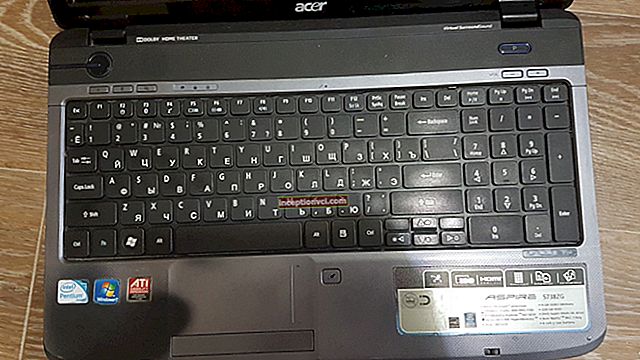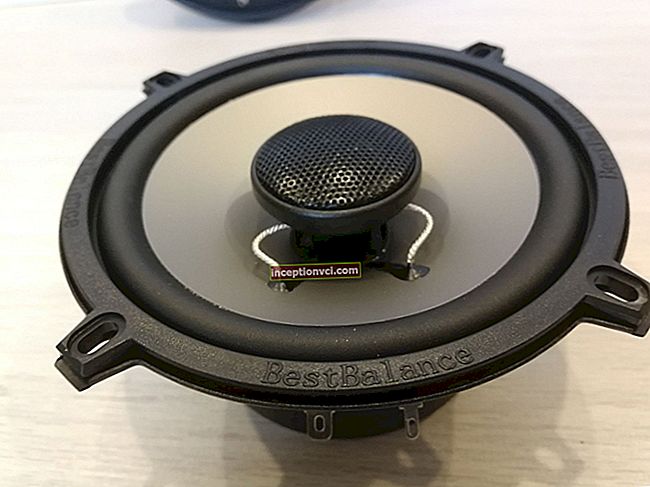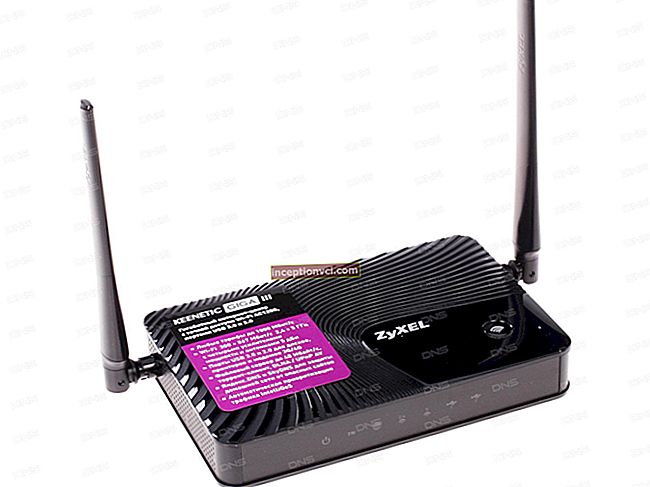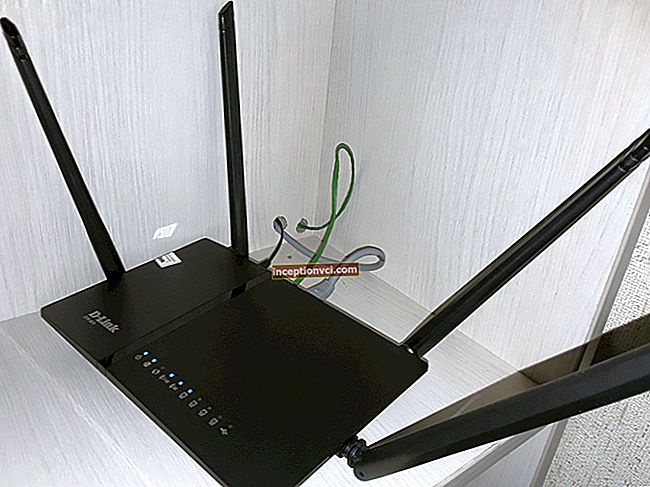Inexpensive motherboards based on super-reliable components with a 5-year warranty, equipped with an advanced cooling system, and wide functionality due to a number of additional controllers simply do not exist.Except for one product from Asus.
In addition to conventional boards, ASUS is known to produce a special series of Republic of Gamers, which has advanced functionality. Less well known, the company launched another special series of motherboards last year. It goes by the name Ultimate Force or TUF.
In addition, in addition to its distinctive military camouflage exterior design, this series is equipped with a dedicated cooling system and high-quality components that extend the warranty period to 5 years. The TUF series began with the SaberTooth 55i based on the Intel P55 Express chipset, but has now been continued. As the name suggests, the new X58 Sabertooth board is based on the Intel X58 Express chipset and supports LGA1366 processors. Let's check how it differs from its predecessor in terms of PCB design, BIOS settings and performance in our tests.
Packaging and accessories
The box with the ASUS X58 Sabertooth is painted in such a way that it looks like metal, although in reality it is simple cardboard.

In addition, the motherboard also has the following accessories:
Four SATA cables with metal-lock connectors, two with L-lock and two straight. One pair is specially designed for SATA 6Gb / s devices (has white connectors);
Flexible bridge for 2-piece SLI graphics configurations;
Back plate;
"ASUS Q-Connector", including adapters for connecting system unit buttons on the front panel and indicators, USB port;
User's manual;
Multi-lingual 5-year warranty form;
DVD with drivers and software;
"Powered by Asus" stickers for the system unit.

Design and functionality
We have already mentioned the characteristic color scheme of the TUF series. Its winged emblem can even serve for some special forces, while the combination of black, green and brown does not differ from military camouflage.

The radiators look somewhat unusual. They look rough and they really are when you touch them. The manufacturer says that the ceramic coating on the heatsinks, called CeraM! X, dissipates heat better than conventional metal heatsinks due to its larger surface area.

The functionality of the board is largely determined by its Intel X58 Express chipset. It supports all modern LGA1366 processors and triple channel memory. There are six slots for 24 gigabytes of memory. Two graphics card slots operate at full PCI Express 2.0 x16 speed and support CrossFireX and SLI configurations. The third PCIe slot operates in x4 mode. The Intel ICH10R South Bridge offers six SATA 3Gb / s ports with the ability to combine hard drives into RAID 0, 1, 5, or 10 arrays.

The capabilities of the once flagship, but already quite old, chipset are complemented by a number of built-in controllers: Marvell 88SE9128 adds two SATA 6 Gb / s ports, VIA VT6308P is responsible for IEEE1394 (FireWire), NEC D720200F1 supports two USB 3.0 ports on the rear panel, and JMicron JMB362 for eSATA boards and power eSATA ports. By the way, we saw Power eSATA connectors on other boards, but they were all combined. That is, power for external SATA devices was provided via USB, and you could use the combo eSATA / USB port not only for eSATA, but also for USB devices. The eSATA power connector of ASUS motherboards only supports external SATA devices.

Here is a complete list of connectors on the back of the motherboard:
PS / 2 connectors for keyboard or mouse;
Eight USB ports, including two USB 3.0 ports (blue connectors) based on the NEC D720200F1 controller; six more USBs are available as three internal PIN connectors;
Optical S / PDIF and six analog audio connectors are provided by an eight-channel Realtek ALC892 chip;
IEEE1394 (FireWire) port is supported by the VIA VT6308P controller, the second port is available as an internal PIN connector;
Power eSATA 3Gb / s port (green connector) and eSATA 3Gb / s are implemented thanks to JMicron JMB362 controller;
LAN port (the network adapter is based on the Realtek RTL8110SC gigabit network controller).
Several exclusive features of the ASUS motherboard as a whole, which are implemented in the X58 Sabertooth, can be noted: jumpers for expanding the voltage range of the processor and memory, MemOK! Button for solving memory-related problems that may prevent your system from starting, Q-LED indicators for diagnostic purposes.
BIOS settings
The interface, structure and available options for the BIOS of ASUS motherboards are very similar, but there are some differences between regular devices and ROG series products. We might also expect to see some differences in the TUF series, but the BIOS from the X58 Sabertooth doesn't show any.
Most of the performance tuning options can be found in the Ai Tweaker menu. By default, each parameter is set to automatic. You can set the Ai Overclock Tuner to DOCP and the board will adjust the CPU multiplier and clock to extend the memory clock to the specified level. In XMP mode, the board will use the parameters recorded in the SPD of the memory modules, if they support this technology. The CPU Level Up parameter can automatically overclock the processor.
The "Advanced" section is used to manage the chipset, embedded controllers and interfaces.
The CPU Configuration subsection contains a number of important parameters related to the CPU.
Some options can be found on a separate page called "Intel PPM Configuration". You should definitely go there to change the Intel C-STATE Tech parameter. It is disabled by default, which means the processor does not go into deep power saving mode when idle. In addition, it will not be able to increase its frequency multiplier by x2 in a single threaded load. In other words, Turbo Boost technology will not work at full capacity and will only use the x1 multiplier regardless of processor load and power consumption.
The Power section contains a EuP Ready option that reduces the power consumption of the board when it is powered off but not unplugged.
The Hardware Monitor section is used to check key voltages, temperature and fan speed.
The Boot section is intended to specify the boot order of devices and some other parameters related to the boot process. The "Tools" section contains several special utilities.
EZ Flash 2 is a convenient and informative tool for updating motherboard BIOS.
OC Profile - for storing and managing multiple BIOS settings profiles.
AI Net 2 is a tool that helps diagnose network cable.
Drive Xpert configuration is designed to manage hard drives connected to SATA 6 Gb / s ports.
Test system and methods
All tests were run on the following test platform:
Asus X58 Sabertooth Rev. 1.02 board (LGA1366, Intel X58 Express, BIOS version 0603);
Intel Core i7-930 processor (2.8 GHz, Bloomfield D0);
3 x 1024 MB Kingston HyperX DDR3-1866, KHX14900D3T1K3 / 3GX, (1866 MHz, timings 9-9-9-27, voltage 1.65 V);
HIS HD 5850, H585F1GDG video card (ATI Radeon HD 5850, Cypress, 40 nm, 725/4000 MHz, 256-bit GDDR5 1024 MB);
Kingston SSD Now V + Series (SNVP325-S2, 128GB);
DVD ± RW Sony NEC Optiarc AD-7173A optical drive;
Scythe Mugen 2 Revision B (SCMG-2100) CPU cooler;
Zalman CSL 850 thermal interface;
CoolerMaster RealPower M850 PSU (RS-850-ESBA);
The outdoor stand is built using Antec enclosures.
We used the operating system Microsoft Windows 7 Ultimate 64 bit (Microsoft Windows, version 6.1, Build 7600), Intel Chipset Software Installation Utility version 9.1.1.1025, ATI Catalyst 10.9 graphics card driver.
Overclocking features
We had no problem running our Sabertooth X58 board in default mode. We easily put together our test system and installed the OS. The processor regularly reduced its frequencies and voltage in standby mode.
In order to enable Power Saving Mode and Intel Turbo Boost Technology, we have enabled the Intel C-STATE Tech option in the motherboard BIOS.As a result, the CPU multiplier has been increased to x23 for single-threaded workloads and x22 for higher workloads.

It was when we tried to overclock the processor that some problems appeared. The board normally starts up and issues a POST signal, but starts to restart every time the operating system is attempted to boot. We thought that the voltage on the processor could be incorrectly set in Offset mode (when it is not fixed at a certain level, as in manual mode).
But in fact, we didn't even overclock the processor before the described problem appeared. If you increase the voltage on the processor by only 0.00625 volts and leave the rest of the parameters at their default values, the board may no longer load the operating system! As it turned out, the board correctly increases the voltage in Offset mode, and the problem lay in the Load-Line Calibration option. If you disable it, the board can easily start the operating system, even if the voltage on the processor increases. If this option is enabled or set to auto, the board will restart all the time.
By the way, we should also note a couple of typical flaws in the BIOS of ASUS motherboards. First, they do not explicitly show the processor voltage by default. They can set it correctly in unattended mode, but you can only see it in monitoring programs. Secondly, it is impossible to set the voltage on the processor to its default level. We can do this formally, if we set the desired value in manual mode, but then this voltage will always be the same, regardless of the load and will not decrease in standby mode. That is, all energy-saving technologies implemented in Intel processors will be disabled.
We can alternatively increase the CPU voltage in Offset mode, but it will automatically increase on the motherboard if you select Auto. Therefore, we must increase the voltage in very small steps, 0.00625 volts in our case, to keep it as close to the default value as possible. Alas, even this slight increase in voltage provoked the problem with its calibration, described above.
Load-Line Calibration is really handy and useful, but not a must for overclocking. Trying to keep the same voltage level on the processor while doing some heavy computation often requires you to exceed the default voltage level, a technique designed to prevent the processor voltage from setting dangerously high. When the processor is in standby mode and allows its energy-saving technologies to be used, its voltage drops, but remains high enough even for overclocking, because there is no load on the processor. Thus, we only have to increase the voltage when the processor is heavily loaded using the Load-Line Calibration system to ensure the stability of the overclocked system. Thanks to this technology, we were able to overclock the processor to 3.9 GHz without officially raising its voltage: the voltage increased, thanks to Load-Line Calibration, when it was necessary, that is, under high loads.
Power consumption
We have measured power consumption using the Extech Power Analyzer 380803. This device is connected before the power supply and measures the power consumption of the entire system (without monitor), including the power loss inside the power supply. The LinX program was used to load the Intel Core i7-930 CPU. For a clearer picture, there are graphs that show how the computer's power consumption grows depending on the number of active threads in LinX (both by default and for an overclocked system). We tested in four modes: idle, single load, four and eight load. The boards are listed alphabetically in the diagrams.


Boards consume approximately the same amount of power at default settings, regardless of load.However, the X58 Sabertooth is much more economical when overclocked, apparently due to the default voltage on the CPU-integrated memory controller (we had to increase the voltage above the default level on Gigabyte boards to keep the memory modules stable at high frequencies).
Conclusion
Quality and reliability are critical and are fundamental characteristics of any motherboard, as they determine the lifespan and stability of the entire computer. This is why MSI is emphasizing the use of "military grade" components in its products, while Gigabyte's Ultra Durable technology is in its third version. Not surprisingly, ASUS offers their motherboards in a series of high reliability called TUF or Ultimate Force. There is one important difference between the TUF series and its competitors. ASUS not only promotes its products as highly reliable and backs this claim with test results (there is a certificate describing the test methods included in the package). Most importantly, ASUS is extending the warranty period for its TUF products for a full five years!
According to our research, ASUS X58 Sabertooth is no different from regular ASUS motherboards, except for the characteristic color scheme. Its functionality is somewhat broader than a regular motherboard. Packaging and accessories are the same as other ASUS motherboards. It takes full advantage of the chipset's capabilities, with support for multi-GPU configuration of two video cards, and also has several additional controllers that implement SATA 6 Gb / s, USB 3.0 and IEEE1394 (FireWire). Add to this the high quality components, the special CeraM! X radiator coating, a 5-year warranty instead of the usual 3-year warranty! Not surprisingly, such motherboards would cost twice as much, but in fact, the price of the X58 Sabertooth is only about $ 200, which is very modest for a product with LGA1366 support. That's even less than the entry-level LGA1366 motherboards from ASUS, such as the ASUS P6T SE.
Some users may be disappointed with the problems when we tried to overclock the processor and memory on this board, but they are not too serious and the motherboard can be used successfully for overclocking. In addition, these issues may be corrected in a future BIOS update. After all, there are many boards from ASUS and other manufacturers that can be overclocked, but the combination of a 5-year warranty, advanced features and low price is a truly unique proposition. In fact, you buy the ASUS Sabertooth X58 for the life of your computer. If the board fails within the next 5 years, ASUS will replace it. And if it burns out after 6 or 8 years, for example, there will be no reason to recover. It would be much wiser to replace the entire computer than to buy a new Sabertooth. We hope we will see more TUF products with the same attractive combination of high functionality, low price and long service life!









